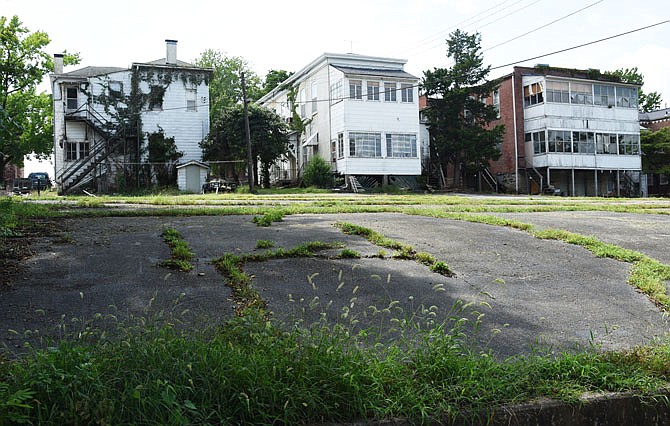The Jefferson City East Capitol Avenue Urban Renewal plan has been boiled down to a two-page report, which in plain English, says the proposal conforms with the city's idea of how to invigorate and beautify more than 38 acres of historic downtown real estate.
The document, authored by Jefferson City's Department of Planning and Protective Services staff, states the city will undertake an infrastructure improvement project on Capitol Avenue in 2017.
The Jefferson City Housing Authority commissioners reviewed the report at their Tuesday meeting. The Planning and Zoning Commission will do the same when it meets Thursday.
The city's Planning Department will recommend the planning and zoning panel adopt motions to add two parcels of land to the urban renewal tract and to find the East Capitol Avenue Urban Renewal Plan conforms with the city's existing plans.
The parcels, identified as Nos. 31 and 32, are within the block of East Capitol between Jackson and Marshall streets and can be found on the site maps on the city website.
The Housing Authority set a meeting for 3:30 p.m. Tuesday to discuss the results of the Planning and Zoning Commission meeting, Housing Authority Executive Director Cynthia Quetsch said.
This series of meetings is required before the city can launch its revival of the long-neglected area near the riverfront and the Capitol.
In its narrative, the Planning Department staff wrote, "The East Capitol Avenue Urban Renewal Plan represents the most significant tool, to date, to promote and induce revitalization of the privately-owned site and building conditions within the area."
The infrastructure improvement project will address factors such as sidewalks, curbs, gutters and lack of street lighting, according to the report.
The area subject to the urban renewal is actually included in two plans previously adopted by the city - the 1994 Comprehensive Plan and the 2004 Central East Side Plan. Planning staff explain in the latest report, "Both plans support the findings of the proposed East Capitol Avenue Urban Renewal Plan."
The 1994 plan identified the "High/Chestnut" area (which extends from Jackson to Benton streets, north of U.S. 50/63).
The planners have summarized:
"The Comprehensive 1994 plan recommended development of specific neighborhood plans and also identified the 'High/Chestnut' area as having experienced transformations, started decades ago, that contributed to the neighborhood's instability. (The High/Chestnut sub-area generally extended from Jackson to Benton streets, north of U.S. 50/63.) One of this plan's suggestions was to employ redevelopment overlay districts to encourage revitalization and redevelopment within portions of the now-proposed East Capitol Avenue Urban Renewal Area.
"The Central East Side Plan was adopted in 2004 as the neighborhood plan for the area that includes the East Capitol Avenue Urban Renewal Area. Stakeholders participated in a SWOT analysis (Strengths, Weaknesses, Opportunities, Threats). Among the weaknesses identified as obstacles to economic development of the neighborhood were absentee landlords, substandard properties, image of poor housing conditions and perception of the area as a crime center."
After their research, those planners recommended in this report: "Both (areas) indicate that there should be significant renovation to preserve historic structures along with targeted redevelopment to achieve objectives of re-establishing and revitalizing the neighborhood fabric."
Under the statutes, the city can condemn blighted property.
Within their new report, city planners have observed, "The East Capitol Avenue environs have been the subject of scrutiny over many years, due to the presence of numerous highly visible, deteriorating properties in the shadow of the Capitol. Over the years, the area has been the subject of intense code of enforcement activity, including mowing tall grass, removing brush, securing doors and windows, building repairs and demolition.
"As a result of the inability to incentivize repairs and maintenance of a significant number of structures through typical code enforcement methods, the city looked to a remedy outlined in the Central East Side Plan and also in the department's initial Abandoned Building report in 2014, which referenced using powers granted to the Land Clearance for Redevelopment Authority to acquire blighted properties."

